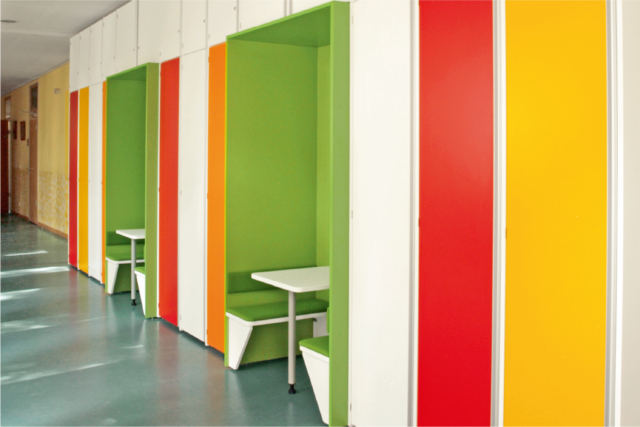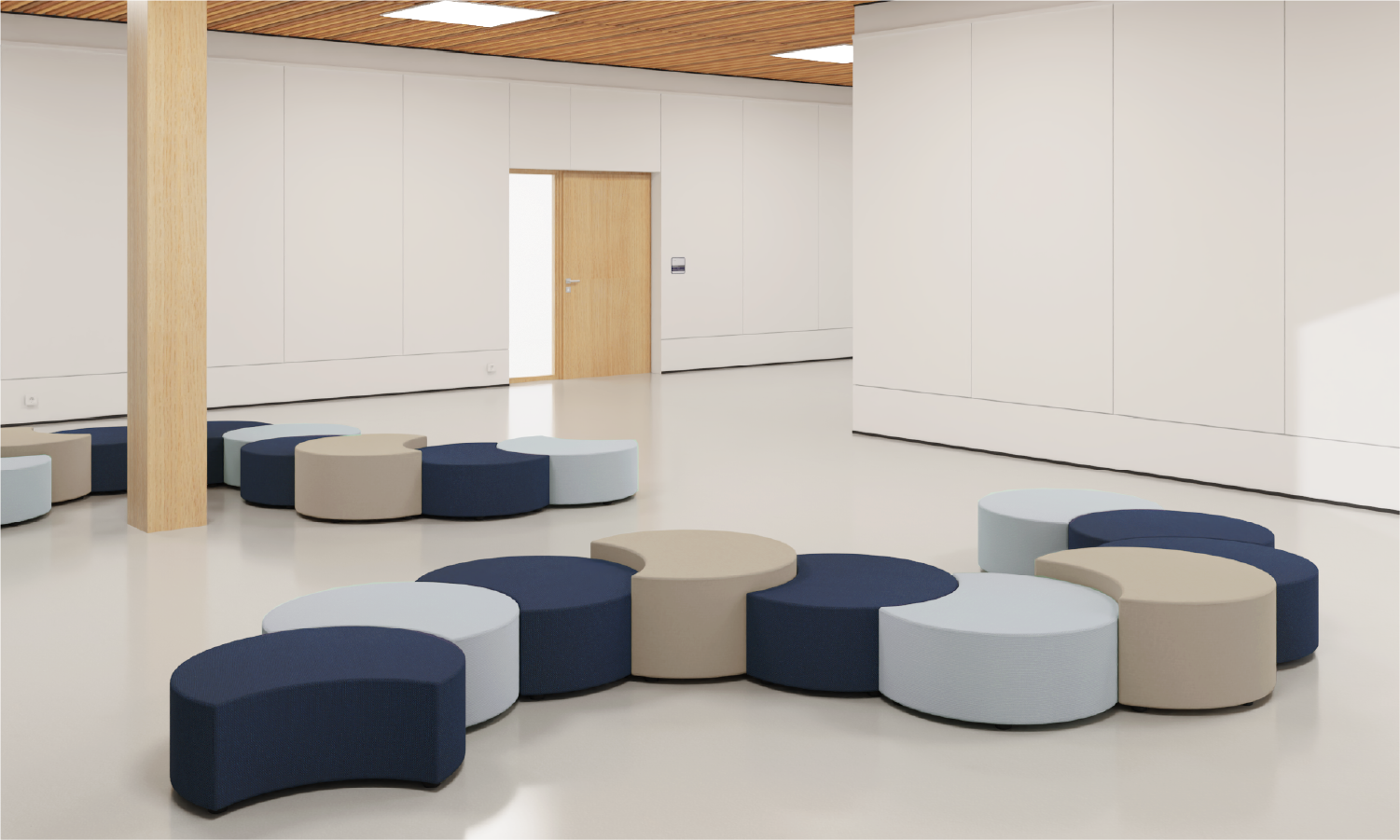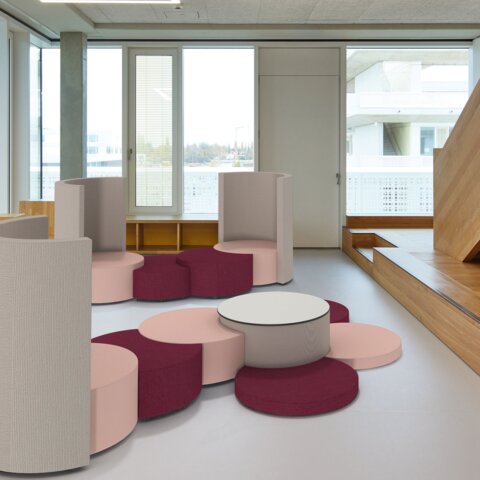05.12.2023
ESCAPE ROUTE AND BLESSING
DESIGNING SCHOOL CORRIDORS AS OPEN LEARNING ENVIRONMENTS
Anyone who set up schools and teaches in them faces the challenge of combining a traditional floor plan with new forms of learning under one roof. There is undreamt-of potential in the school corridor: although its utilisation requires some fire protection measures, it opens up a wealth of possibilities.
Let's mentally open the door to the school of the future - what do we see? Quiet workstations where pupils can learn in a self-organised and concentrated manner; sheltered seating niches where pupils can retreat with a book; spacious tables where learning groups can engage in lively discussions. In other words: We see an open learning world that inspires a new learning culture.

DESIGNING OPEN LEARNING ENVIRONMENTS IN SCHOOLS
Many schools still have a long way to go to realise this vision. Space is one of the biggest hurdles: In most existing buildings, a new learning culture can hardly be reconciled with the frontal room structures.
A survey by the German School Portal shows, for example, that cooperative forms of learning usually fail due to the limitations of space. The change to a new learning culture therefore requires creative use of the available space.
The school corridor plays a key role here. It runs through the entire school building and takes up to a third of the total floor area. It mainly acts as a link between the classrooms. During lessons, however, it is usually unused. How can this intermediate space be opened up pedagogically and enable lively learning?
COMBINING SCHOOL CORRIDOR DESIGN AND FIRE PROTECTION
Firstly, any form of corridor design must be geared towards fire safety. According to the "Safe School" of the DGUV there is to note that:
- the prescribed escape route width is observed; this is at least 59", depending on the number of pupils.
- the furniture used is made of non-combustible or flame-retardant materials to prevent the development of fire on the escape route.
- the furniture used is heavy or cannot be moved to avoid obstacles on the escape route.
In order to fully ensure fire protection, it is important to coordinate ideas for the corridor design with the responsible building inspector. The more well thought-out the room concept is at the time of consultation, the greater are the chances of success, explains architect Andreas Flock in the Interview with the BMBF "Presenting good professional concepts definitely increases the chance that they can subsequently be implemented."
FURNISHING THE SCHOOL CORRIDOR AS A STUDY ROOM
Strong room concepts for the school corridor are also possible within the limits of fire safety. Whether for learning, relaxing or socialising - furnishing with fire safety-compliant school furniture opens up numerous possibilities.
For example, many corridors can be equipped with compact workstations that invite collaborative learning or discussions. Flexible seating landscapes are one way to enrich the school corridor pedagogically. Their shape and size adapt to the school corridor and offer students comfortable places to read, dream, play and learn. Thanks to flame-retardant materials and floor fixings, they are safe furnishing solutions for the school corridor.
Our flexible and fire protection-compliant JOYN & COCOON seating landscape
With well thought-out furnishings, the school corridor can contribute to a new learning culture finding its way into the school; and with it, variety, community and openness. The school corridor is therefore not only an escape route, but also a blessing.

 Deutsch
Deutsch
 English
English
 Français
Français




